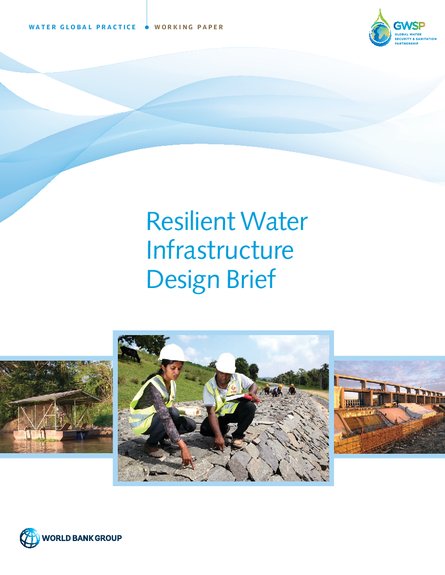
The purpose of the Resilient Water Infrastructure Design Brief is to guide users on how resilience can be built into the engineering design of their project. With a focus on the three natural hazards most likely to affect water and sanitation infrastructure (droughts, floods, and high winds from storms), the document provides a six-step process to help users address weather and climate related challenges that are most likely to affect an infrastructure component at some point in its operational lifetime. In order to achieve both systems level resilience and infrastructure level resilience, this design brief should be used in tandem with other World Bank publications, such as the 2018 guidance document “Building the Resilience of WSS Utilities to Climate Change and Other Threats: A Road Map,” which emphasizes systems level resilience and analysis. The design brief highlights the relationship between these two documents and the unique function that each serves in improving overall resilience in the water sector. It also includes guidance for users to incorporate resilience design principles into projects’ appraisal documents and a sample module/task description for applying the two documents to an engineering design or feasibility study terms of reference.